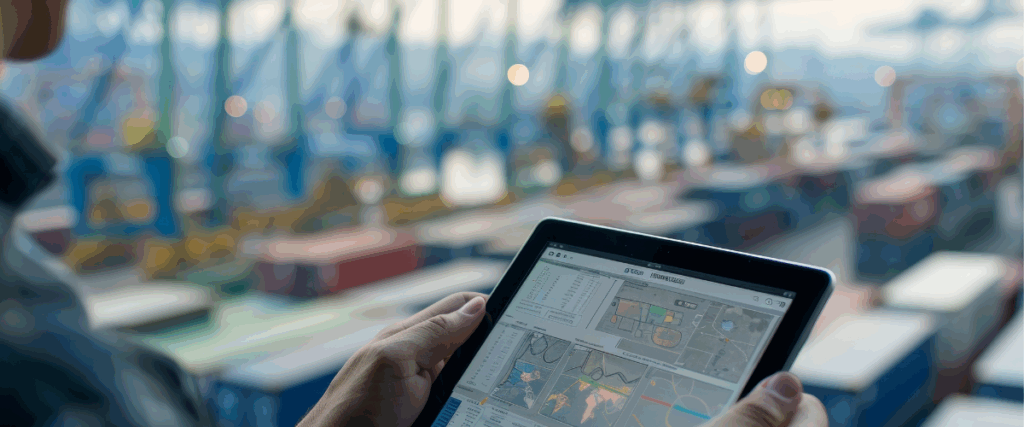Table of Contents
Importing medical equipment from China to Europe demands precision, compliance, and the right documentation. Without the proper paperwork, shipments can be delayed or even rejected at customs. This article explains what documents needed for medical equipment from China to Europe, including certificates, declarations, and logistics processes required to ensure smooth clearance and timely delivery.
Why Documentation Matters in Medical Equipment Import
Every medical device entering Europe must meet strict EU regulations, particularly the Medical Device Regulation (MDR). Proper documentation guarantees both product safety and traceability.
| Key Document Type | Purpose | Issued By | Importance |
|---|---|---|---|
| CE Certificate | Confirms compliance with EU MDR | Authorized Notified Body | Mandatory for all medical devices |
| Declaration of Conformity | Ensures the product meets EU directives | Manufacturer | Legal requirement |
| Commercial Invoice | Lists goods and value | Exporter | Needed for customs clearance |
| Packing List | Details contents per box | Shipper | Confirms cargo integrity |
Moreover, insufficient documentation can lead to costly demurrage, re-inspection, or product seizure, significantly increasing shipping costs and delays.
What Documents Needed for Medical Equipment from China to Europe
Several documents are essential when exporting medical devices. The following list outlines the key paperwork required for both exporters and importers:
- Commercial Invoice – Specifies value, description, and HS codes.
- Packing List – Confirms quantities and package details.
- Bill of Lading / Air Waybill – Transport document confirming ownership.
- Certificate of Origin – Issued by the Chamber of Commerce in China.
- CE Certificate – Proof of EU conformity.
- ISO 13485 Certificate – Ensures manufacturing quality standards.
- Import License – Required by EU customs for certain device categories.
- Product Technical File – Includes design and risk assessments.
- Declaration of Conformity (DoC) – Mandatory under MDR.
Each of these documents is checked during customs inspection. Missing even one can result in shipment delays or rejection.

How to Obtain CE Certification for Medical Devices
The CE marking is a critical requirement for all medical devices imported to Europe. To secure it:
- Classify the device (Class I, IIa, IIb, or III).
- Conduct conformity assessment via a notified body.
- Prepare a technical file with testing and risk analysis.
- Submit the Declaration of Conformity.
- Affix CE mark on packaging and labeling.
| Classification | Device Examples | Review Authority | Typical Approval Time |
|---|---|---|---|
| Class I | Non-invasive items (stethoscopes) | Self-declared | 2–3 weeks |
| Class IIa | Syringes, diagnostic tools | Notified Body | 1–2 months |
| Class IIb | Infusion pumps | Notified Body | 2–4 months |
| Class III | Life-support systems | EU Commission | 4–6 months |
However, for reusable or high-risk medical equipment, additional biocompatibility and sterilization testing may be required.
Customs Clearance Process for Medical Equipment
Customs clearance for medical devices involves multiple checks, including tariff classification, product compliance, and tax calculation.
Step-by-step clearance process:
- Submit import documents to EU customs.
- Verify HS codes and tariff duties.
- Conduct conformity verification (CE, ISO).
- Pay customs duties and VAT.
- Obtain release note for delivery.
| Destination | Avg. Clearance Time | Import Duty | VAT Rate |
|---|---|---|---|
| Germany | 2–4 days | 2.7% | 19% |
| France | 3–5 days | 3.0% | 20% |
| Netherlands | 2–3 days | 2.5% | 21% |
| Italy | 4–6 days | 3.2% | 22% |
Proper pre-clearance submission shortens delays and ensures medical equipment arrives ready for hospital or clinical use.
Shipping Options from China to Europe
Medical equipment can be shipped via air, sea, or rail. The best choice depends on the product type and urgency.
| Method | Transit Time | Typical Cost per kg | Ideal For | Pros | Cons |
|---|---|---|---|---|---|
| Air Freight | 5–10 days | $5–$9 | High-value, urgent items | Fast delivery | Expensive |
| Rail Freight | 15–22 days | $2–$4 | Mid-range goods | Reliable | Limited routes |
| Sea Freight | 25–40 days | $0.8–$1.5 | Bulk shipments | Cheapest | Slower |
For example, surgical masks or portable oxygen machines often use air freight, while MRI parts or CT scanners typically move by sea or rail due to weight.
Real Case Studies: Medical Equipment Shipments
Case 1: Shanghai to Paris (Air Freight)
Cargo: 200 ventilators (Class IIb)
Weight: 5,000 kg
Cost: $38,000 total
Transit Time: 8 days
Outcome: Smooth customs release using CE and DoC documentation.
Case 2: Shenzhen to Rotterdam (Rail Freight)
Cargo: 40 pallets of diagnostic kits
Weight: 12,000 kg
Cost: $22,500
Transit Time: 19 days
Outcome: Cleared with ISO 13485 and Product Technical File.
Common Mistakes When Exporting Medical Devices
Many exporters overlook small but critical details:
- Submitting incomplete HS codes
- Ignoring product labeling requirements
- Missing the Declaration of Conformity
- Failing to match invoice with packing list
- Skipping customs pre-approval
As a result, shipments often face delays or reclassification fines. Hence, double-checking every document before shipment is crucial.
How to Simplify Compliance and Logistics
Outsourcing to professional freight forwarders specializing in medical equipment logistics from China to Europe simplifies the process. They handle document preparation, customs clearance, and transport coordination.
Checklist for streamlined logistics:
- Pre-inspection of CE, DoC, and ISO certificates
- Accurate HS code assignment
- Digital filing of customs data
- Coordination with European authorized representatives
Additionally, using electronic data interchange (EDI) ensures faster approval from customs and healthcare authorities.
Conclusion
Efficiently importing medical devices requires understanding what documents needed for medical equipment from China to Europe and preparing them thoroughly. By ensuring compliance with CE, ISO, and customs standards, importers can avoid costly delays and maintain a reliable medical supply chain. In short, accurate documentation is the key to successful and timely medical equipment delivery across Europe.
Request a Quote
Need a tailored solution for your shipping from China?
Let TJ China Freight Forwarder assist you with reliable, cost-effective service.
FAQ:
Q1.Do I need CE certification for all medical devices from China?
Yes, all medical devices require CE certification to comply with EU MDR standards before entering Europe.
Q2.How long does customs clearance take for medical devices in Europe?
Typically 2–5 business days, depending on country and whether all required documents are correctly submitted.
Q3.What is the most cost-effective shipping method for medical equipment?
Sea freight is most affordable for bulky shipments, though air freight is faster for urgent medical supplies.
Q4.Can I import used medical equipment into the EU?
Only if re-certified under EU MDR and accompanied by safety inspection and revalidation documents.
Q5.What happens if my CE mark is missing or invalid?
Shipments may be detained, returned, or destroyed, leading to financial and regulatory penalties.




